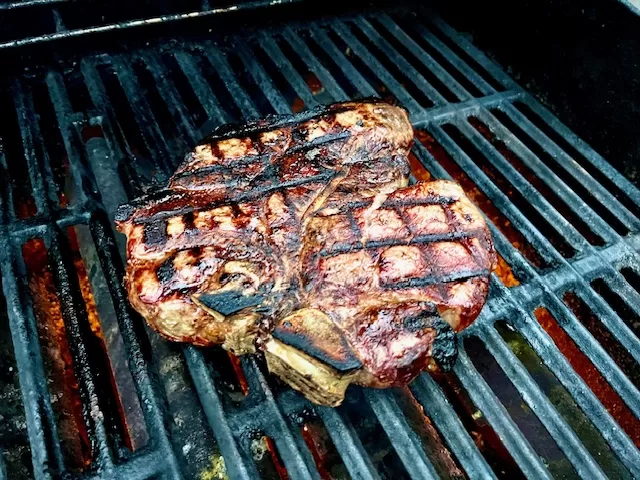
Porterhouse vs T-Bone Steak: What’s the Difference?
When it comes to classic steaks that command attention on the grill, few cuts compare to the Porterhouse steak and the T-Bone steak. At first glance, these two steaks may seem nearly identical—with both featuring that signature T-shaped bone and two distinct muscles—but look a little closer and key differences emerge.
If you’ve ever wondered about the difference between a Porterhouse and T-Bone steak, you’re not alone. Here’s everything you need to know about these prized cuts of beef so you can grill with confidence.
1. Both Cuts Come from the Short Loin
Both the T-Bone steak and the Porterhouse steak are cut from the short loin section of the cow. This area is located behind the ribs and in front of the sirloin. It’s known for producing tender, flavorful cuts that are perfect for high-heat

T Bone Steak with Sear Marks
Each steak includes two muscles:
-
The strip loin (also known as the New York strip)
-
The tenderloin (the same muscle used for filet mignon)
The T-shaped bone runs between them, giving both steaks their iconic look.
2. Size and Tenderloin Portion Make the Difference
The primary difference between a Porterhouse and a T-Bone lies in the size—particularly the size of the tenderloin section.
According to USDA regulations:


Grilled Porterhouse
-
A T-Bone steak must have a tenderloin at least 0.5 inches wide.
In short: every Porterhouse is technically a T-Bone, but not every T-Bone qualifies as a Porterhouse Cut. Porterhouses are cut from the rear of the short loin, where the tenderloin is larger. T-Bones are cut closer to the front, where the tenderloin tapers off.
3. Thickness and Weight
Because the Porterhouse includes a larger tenderloin, it’s typically thicker and heavier than the T-Bone. Porterhouses often weigh 24 ounces or more and are usually at least 1.25 inches thick, making them a go-to choice for sharing or a serious appetite.
T-Bone steaks are usually lighter and a bit easier to handle on the grill, which can make them a good option for single servings.
4. Grilling Techniques Are Similar
Both steaks benefit from the same


T-Bone Steak on the grill with searmarks
-
Finish with indirect heat if needed
-
Let rest before slicing
However, because the tenderloin cooks faster than the strip side, managing heat zones on the grill can help cook both sides evenly. This is especially important with Porterhouse steaks, where the thicker tenderloin may need extra attention.


Sliced Porterhouse Steak
5. Buying Tips at the Butcher Counter
When choosing between these two cuts:
-
Look for bright red color, good marbling, and firm texture
-
If you want more filet on your steak, ask for a Porterhouse
-
If you prefer a more modest cut with a balance of both muscles, a T-Bone may suit your needs
Remember, both cuts offer the best of two steak worlds—a flavorful strip and a tender filet—separated by a bone that enhances flavor during cooking.
Final Thoughts
Whether you reach for a Porterhouse steak or a T-Bone steak, you’re getting one of the most iconic cuts for
Some of the links in this article are “affiliate links”, a link with a special tracking code. This means if you click on an affiliate link and purchase the item, we will receive an affiliate commission.
The price of the item is the same whether it is an affiliate link or not. Regardless, we only recommend products or services we believe will add value to our readers.
As an Amazon Associate I earn from qualifying purchases.







